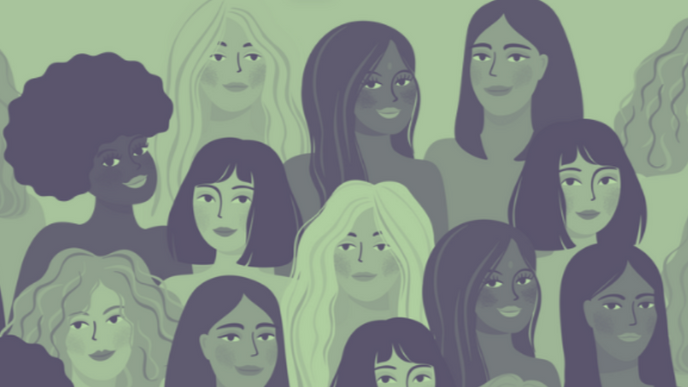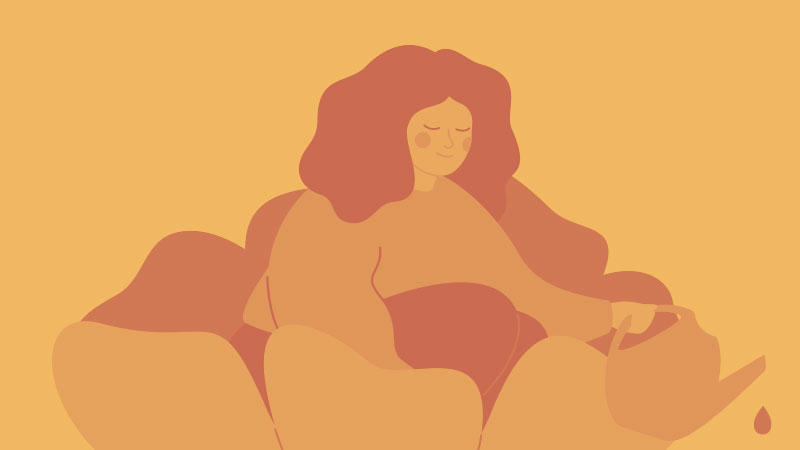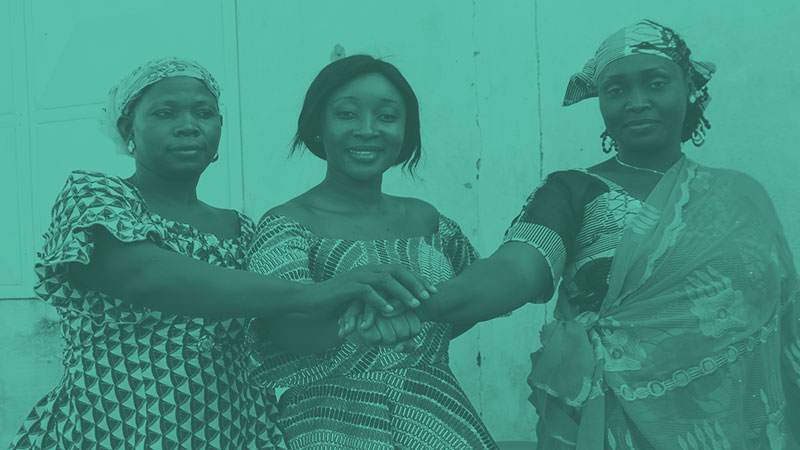Have you ever wondered where the coffee you religiously drink every morning comes from to start the day; who produces it and what the realities are for farm workers ? We are interested in gender dynamics in coffee production in Kenya, where we carried out a diagnostic study of two coffee cooperatives in the Kericho region.
Contrary to popular belief, women make up the majority of agricultural workers in Kenya : 70% for all types of production, and 60% for coffee production. We therefore set out to understand how the economic opportunities linked to coffee farming benefit the women who are essential to production.
According to data from the African Development Bank, 77% of women are self-employed, compared with 46.8% of men, leaving them highly vulnerable. This figure raises questions about the role played by women on farms. What is their status on the farm ? Do gender norms impact the status of women in rural coffee production ?
Here are our conclusions, drawn from our field diagnosis, as well as from published data and studies on the subject. This observation applies to the Kenyan coffee sector, but our research has shown that these gender dynamics can be observed throughout agricultural production in East Africa.
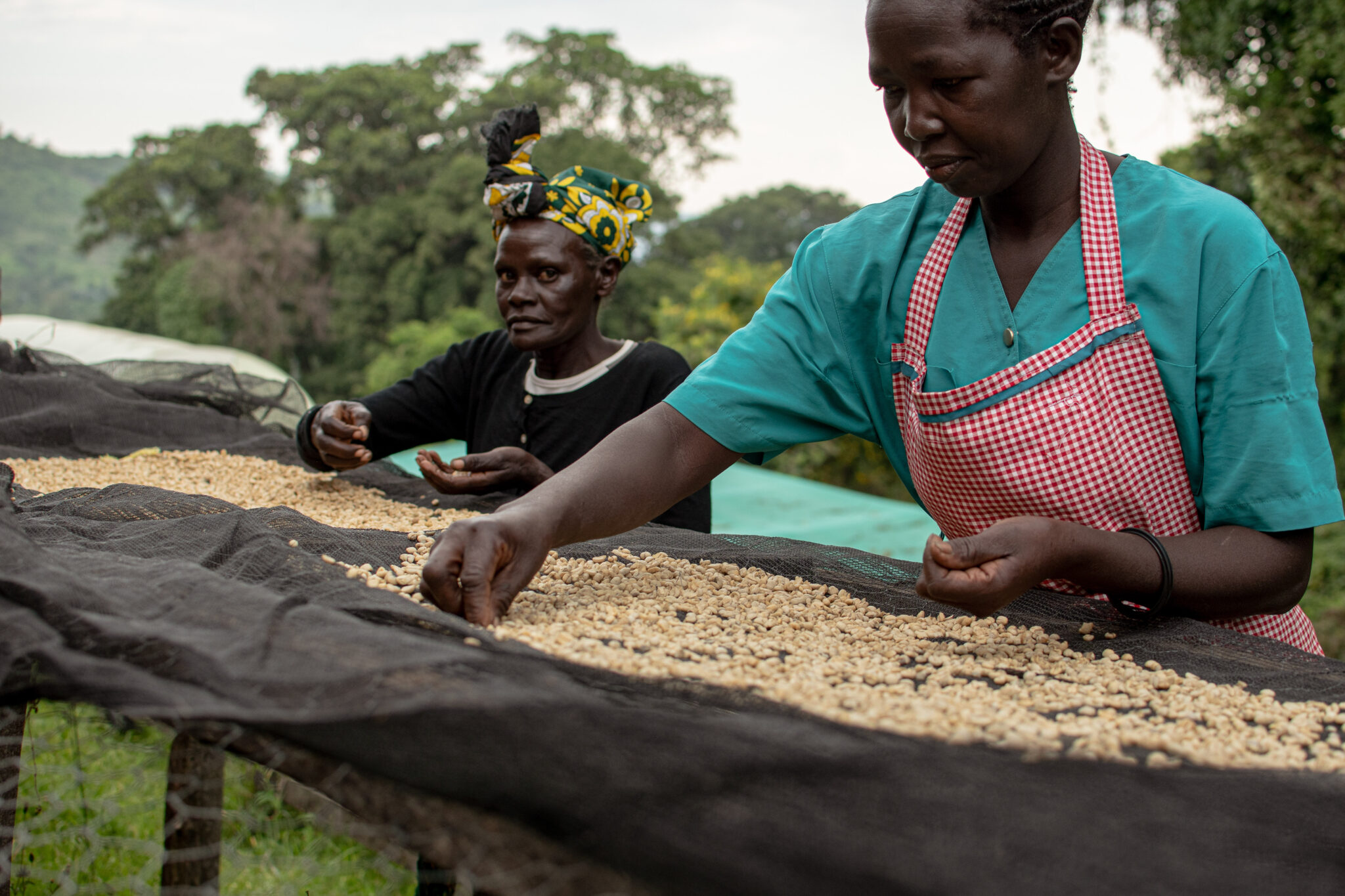
Our findings : work on agricultural production lines reproduces a gendered division of labour to the detriment of women
Many of Kenya’s rural communities are organized along patriarchal lines, with men alone managing a large number of areas, including agricultural production. Although women play an important role in this production, this role is little recognized and valued. While they account for 60% of coffee-growing workers in Kenya, they occupy the most precarious positions, performing the most arduous and least skilled tasks, such as tending the coffee plants and harvesting the fruit.
Men tend to work in stable, skilled jobs that require more skills, such as operating tools and machinery.While women account for 60% of coffee-growing workers in Kenya, they occupy the most precarious positions in the production chain. They are in charge of the most arduous and unskilled jobs, such as tending the coffee plants and harvesting the fruit. Men tend to work in stable, skilled jobs that require more skills, such as operating tools and machinery.
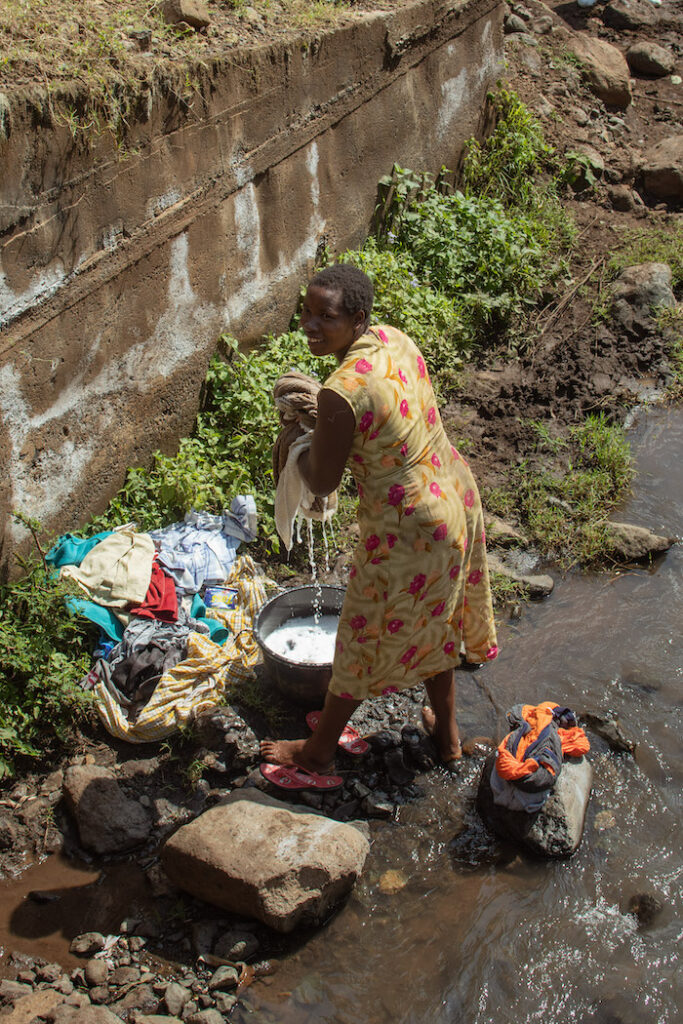
This observation can be extended to other countries in the region. A 2015 Specialty Coffee Association report assessed the gender pay gap in East African coffee production, based on a 2014 survey. On average, men earn over $700 working in coffee production, compared with less than $450 for women. A 2015 Specialty Coffee Association report assessed the gender pay gap in East African coffee production, based on a 2014 survey. On average, men earn over $700 working in coffee production, compared with less than $450 for women.
Women are confined to a domestic role and face numerous obstacles that reinforce their exclusion.
Multiple factors anchor women’s role in the domestic sphere and limit their economic empowerment.
#1 Lack of time
Given the time they devote to household tasks, women have little time to dedicate to developing income-generating activities.
In addition to their hard work on the coffee plantations, women spend an average of 10 hours a day (around 60% of their time) on so-called reproductive activities, such as housework, caring for the family and children, and cooking. Women combine these different tasks and work up to 17 hours a day. According to our research, men work an average of six hours less per day than women, and have more rest time.
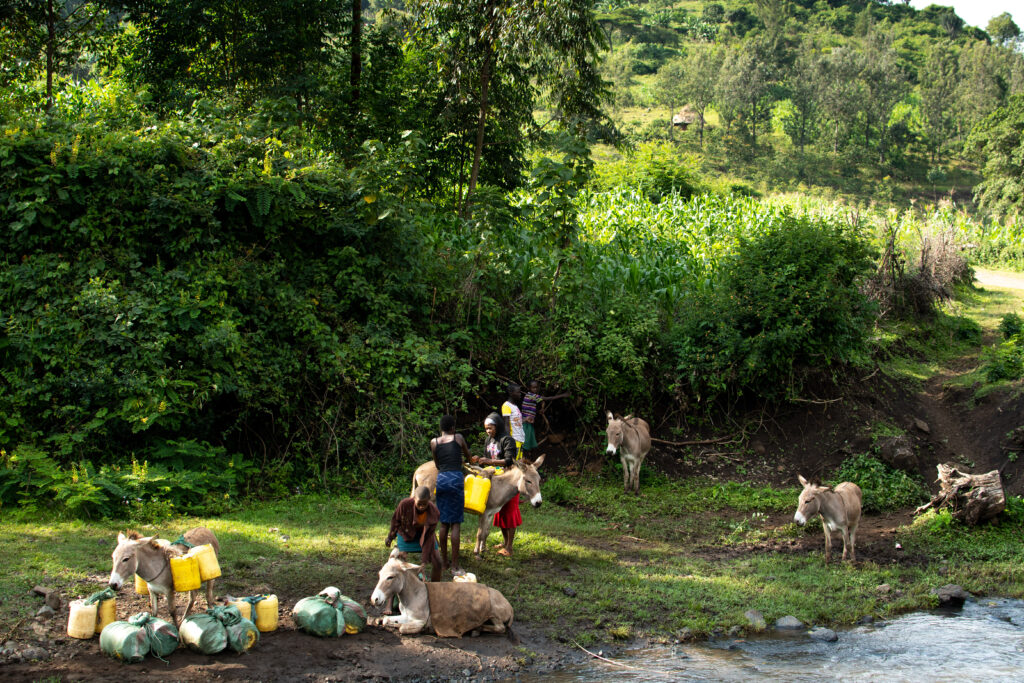
#4 Lack of access to financing
Women have little access to financing and financial institutions, which prevents them from investing in income-generating activities and gaining financial independence. In Kenya and Ethiopia, the gender gap in bank account ownership is 7%, according to the World Bank’s Global Findex Database. It is around 15% in Mozambique and 20% in Nigeria. In 2019, 77% of Kenya’s rural population has access to formal financial services, compared with 91% of the urban population, according to a study by the Central Bank of Kenya.
Access to credit is even more difficult. Women are considered risky creditors because they have few material guarantees to offer, such as ownership of land or property that is usually registered in their husband’s name. Their jobs tend to be less stable and their wages lower than those of men.
Faced with these obstacles, women have developed alternative ways of saving and accessing credit, such as the VSLA (Village Savings and Loan Association). These are self-managed savings groups made up of members of the same community, often women, who accumulate savings as a group in order to obtain loans when necessary.
#5 Lack of autonomy in decision-making
In some households, women make few decisions that affect the household, and can hardly decide on their activities alone. Husbands who recuperate the income accumulated through agricultural production are not always transparent about how it is used. Women also play little part in decision-making in coffee cooperatives, which bring together numerous coffee plantation owners and manage the marketing of production. Indeed, participation rules based on plantation ownership and a minimum annual production quantity make it more difficult for women to join cooperatives.
#6 Lack of self-confidence and legitimacy
Gender norms also have an impact on how women view their own abilities. Indeed, young girls are not encouraged to develop so-called masculine qualities such as boldness or charisma, which can lead to a confidence deficit in adult women and a feeling of lack of legitimacy to occupy leadership positions within their communities.
This lack of confidence in their abilities can be reinforced by domestic violence. According to data from the United Nations Population Fund, around 25% of women in Kenya and 30% of women in Tanzania and Uganda are victims of domestic violence. Violence impacts victims’ physical and mental health in countless ways. It affects self-esteem and the ability to communicate. Women who are victims of violence, for example, are less likely to speak out in public.
All these obstacles form a vicious circle that justifies the exclusion of women from certain economic activities, when these obstacles arise precisely because they are women. For example, they are excluded from certain activities because they have not been trained, but they are less likely to be aware of and participate in these training programs. An employer will prefer to hire a man who can work fixed hours and will justify his choice not to employ a woman by the burden of her domestic tasks, but it is because of social norms that these tasks are not shared and that men are preferred by employers.
A less impermeable separation of tasks than at first sight: women's contributions to agricultural production
Even if women are assimilated to the domestic sphere and spend a large part of their daily lives on these tasks, they also work outside the home. In reality, they combine domestic tasks with farm work, and this work is not always paid, especially when the farm belongs to a family member.
Agriculture is the leading sector of activity for women in East Africa. According to USAID’s East African Gender Fact Sheet, around 96% of women in Burundi, 76% in Kenya, 84% in Rwanda, 71% in Tanzania and 77% in Uganda work in the agricultural sector, particularly coffee farms. Women therefore play an essential role in the region’s agricultural value chains. They do most of the physical work, such as harvesting, pruning and weeding the coffee plants. Although women’s contribution is little valued, it is indeed essential, since it is they who possess the knowledge and expertise needed to guarantee good harvests.
The overwhelming share of unpaid work in women's daily lives
We were able to estimate that the women we spoke to in the Kericho region of Kenya work an average of 17 hours a day, considerably more than the men. Yet men earn almost four times more than women every month. Women don’t reap the fruits of their labor because they don’t control the production cycle. It’s usually the men who sell the farm produce and reap the profits. Women are not always informed of the income they have accumulated or how it is used.
If women were paid according to their working hours, we estimated that their income would increase by 214%, while men’s would decrease by 29%. To arrive at this result, we used the cost-opportunity method, evaluating the income that a woman could obtain on the labor market by substituting another activity for the time spent on domestic tasks, according to the average salaries practiced.
What impact do Fairtrade labels have on the inclusion of women in coffee production in East Africa ?
Fair trade labels are increasingly present in supermarkets and consumer choices. These labels are supposed to guarantee good working conditions upstream in the value chain, and compliance with social and environmental standards.
Fairtrade International’s standards for small producer organizations include the prohibition of all forms of discrimination and a zero-tolerance policy on gender-based violence. To prevent discrimination, Fairtrade International encourages organizations to assess the risks of discrimination within their organization, to make everyone aware of the risks and the measures to be taken, and to implement a policy of equal opportunity in recruitment, remuneration, promotion and training.
The rules to be respected are precisely defined and developed, and the label cannot be awarded to a producer or producer cooperative if they are not respected. But in practice, do these labels really eliminate all forms of discrimination in production ? Our diagnosis in Kenya made us aware of the importance of Fairtrade labels in encouraging respect for everyone’s rights and the creation of more inclusive spaces.
Nevertheless, even if labels help to drive change towards greater equality between men and women, they need to be accompanied by a strong will on the part of producers in the field. We have observed a lack of understanding of the underlying gender issues among coffee producers, which reduces the impact of Fairtrade regulations.
The importance of a global approach to sustainably reduce inequalities
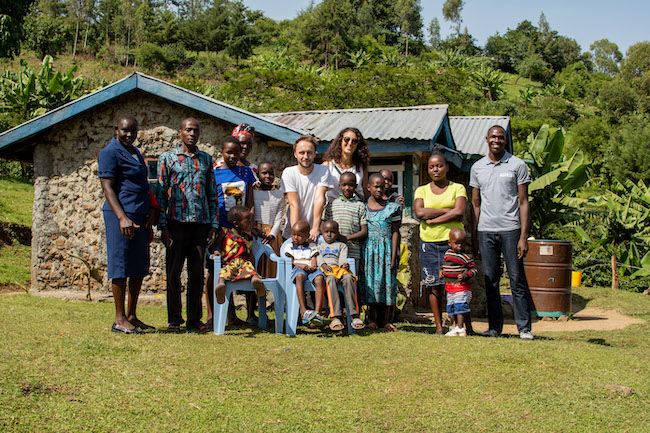
On the basis of this diagnosis and our experience in the field, we would like to stress the importance of integrating a global approach into programs in order to reduce gender inequalities in the long term.
First of all, it’s vital to talk to communities and raise their awareness of gender and the inequalities faced by women. Community awareness-raising can help change the outside view of women who contribute financially to the household, and reduce social pressure for those who deviate from gender norms. It’s also important to focus on women’s education, both literacy and the acquisition of technical skills essential for starting up an economic activity. Education also helps develop leadership and public speaking skills.
Finally, highlighting inspiring female role models is essential, as women often lack female representation outside the patriarchal scheme.
Taken together, these initiatives create a virtuous circle that empowers women in agricultural production, and ultimately leads to a more equitable redistribution of production gains.





